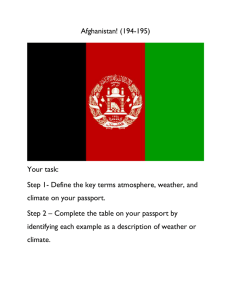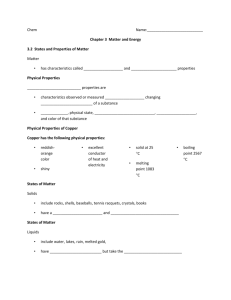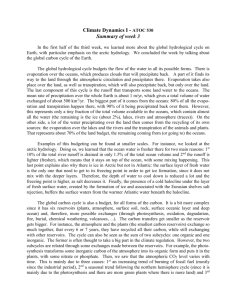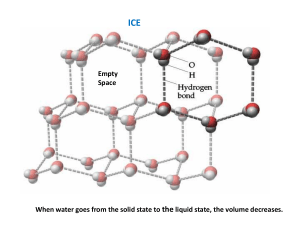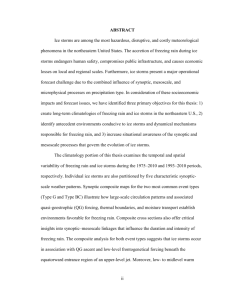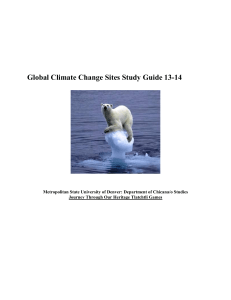Name - Holterman
advertisement
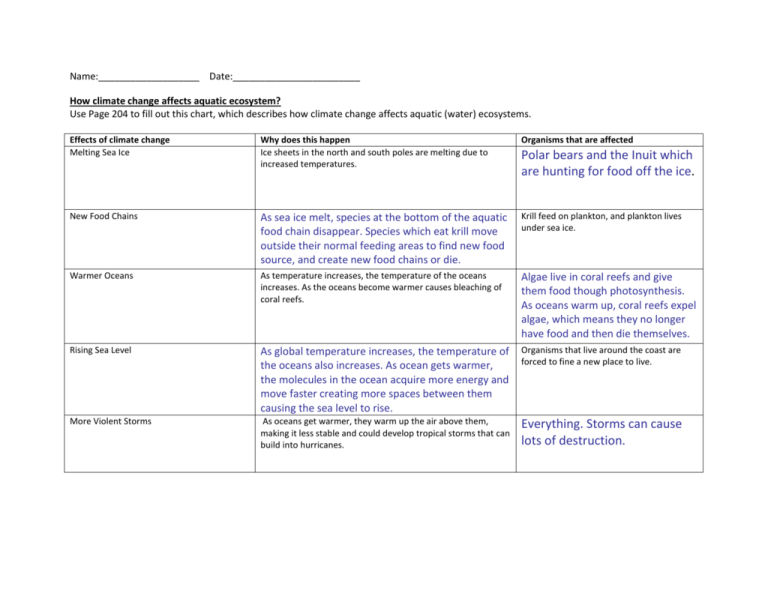
Name:___________________ Date:________________________ How climate change affects aquatic ecosystem? Use Page 204 to fill out this chart, which describes how climate change affects aquatic (water) ecosystems. Effects of climate change Melting Sea Ice Why does this happen Ice sheets in the north and south poles are melting due to increased temperatures. Organisms that are affected New Food Chains As sea ice melt, species at the bottom of the aquatic food chain disappear. Species which eat krill move outside their normal feeding areas to find new food source, and create new food chains or die. Krill feed on plankton, and plankton lives under sea ice. Warmer Oceans As temperature increases, the temperature of the oceans increases. As the oceans become warmer causes bleaching of coral reefs. Algae live in coral reefs and give them food though photosynthesis. As oceans warm up, coral reefs expel algae, which means they no longer have food and then die themselves. Rising Sea Level As global temperature increases, the temperature of the oceans also increases. As ocean gets warmer, the molecules in the ocean acquire more energy and move faster creating more spaces between them causing the sea level to rise. Organisms that live around the coast are forced to fine a new place to live. More Violent Storms As oceans get warmer, they warm up the air above them, making it less stable and could develop tropical storms that can build into hurricanes. Everything. Storms can cause lots of destruction. Polar bears and the Inuit which are hunting for food off the ice. Name:___________________ Date:________________________ How climate change affects terrestrial ecosystem? Use Page 206 to fill out this chart, which describes how climate change affects terrestrial (land) ecosystems. Effects of climate change Changing Organisms Why does this happen Melting Land Ice As temperatures increase, land ice is melting at a very fast speed especially in Northern Canada. In Canada's North, glacial ice and permafrost (permanently frozen layer of soil) melts tilting trees and loosing the soil damaging the foundation of homes. New Deserts Increasing temperatures and decreasing rainfall causes drought which could lead to desertification. Southern Alberta is experiencing less rain. Less rainfall means fewer crops, less water reservoirs which could lead to less food. More Flooding Some areas could experience heavy rainfall that leads to flooding, while other areas may flood due to severe storms such as hurricanes. Other areas flood due to sea levels rising. Organisms that live below sea level must find new homes and flee. Effects on Human Health Increase temperature leads to extreme weather such as heat waves, flood, hurricanes and severe storms. Those events lead to wetter and warmer climate which is favourable for disease and pests which carry them. Extreme weather events cause homelessness, injury and illness. Ex: West Nile; mosquito-borne illness. As climate changes, species either adapt or die off because they cannot withstand the change Organisms that are affected Due to warmer temperatures, less migratory birds make their trips south therefore do not survive the winter.

